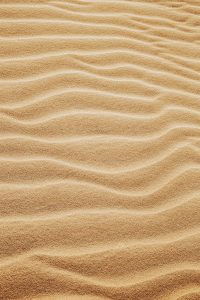Natural sand is formed by natural conditions (mainly rock weathering ). Rock particles with a particle size of less than 5 mm include natural sea sand , lake sand, river sand or gravel sand (that is, minerals are naturally split into fine sand particles).

product definition #
According to the ” Import and Export Tariff of the People’s Republic of China (2020) ” and the ” Commodity and Item Notes of the Import and Export Tariff (2017)”, except for metallic ores with commercial extraction value which are classified in Chapter 26, heading 25.05 includes various Natural sea sand, lake sand, river sand or gravel sand (i.e. minerals naturally broken down into fine sand grains), but excluding sand and powder produced artificially (for example, by crushing) (classified in heading 25.17 or classified as related stone materials) ).
Classification and main uses #
Silica sand and quartz sand #
Silica sand and quartz sand are used in the construction industry, glass industry or cleaning metal, etc.;
soil sand #
Earthy sand, including kaolin sand, is mainly used to make casting molds and refractory products;
Feldspar sand #
Feldspar sand, used in the ceramic industry.Natural sand which has been heat treated to remove impurities remains classified in this heading.
common problem #
Compared with natural sand, artificial sand has the following differences and advantages: The material of artificial sand washing is excellent and stable. Artificial sand washing is an artificially selected raw material. The material is uniform and stable. The mineral composition and chemical composition are consistent with the raw materials. It is not as complicated as natural sand. The sand is clean, free of mud and other harmful impurities, and has stable performance. Good particle size gradation. One type of artificial sand washing, one fineness modulus , only corresponds to one gradation. Its fineness modulus has a linear relationship with the screen residue of a single screen. As long as the linear relationship is established through measurement and the sieve residue of a single sieve is measured, the fineness modulus can be calculated accurately and quickly. In general, natural sand can have multiple gradations with one fineness modulus. The fineness modulus can be artificially controlled through the production process, and production can be organized according to user requirements, which is something that natural sand cannot do.

 April 1, 2024
April 1, 2024 










